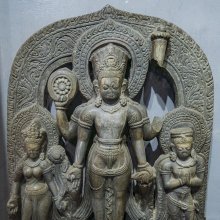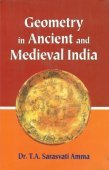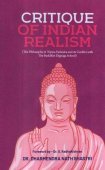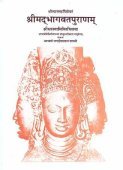Shridhara, Shri-dhara, Śrīdharā, Śrīdhara: 28 definitions
Introduction:
Shridhara means something in Buddhism, Pali, Hinduism, Sanskrit, Jainism, Prakrit, the history of ancient India. If you want to know the exact meaning, history, etymology or English translation of this term then check out the descriptions on this page. Add your comment or reference to a book if you want to contribute to this summary article.
The Sanskrit terms Śrīdharā and Śrīdhara can be transliterated into English as Sridhara or Shridhara, using the IAST transliteration scheme (?).
Images (photo gallery)
In Hinduism
Purana and Itihasa (epic history)
Source: archive.org: The Garuda puranamA Sridhara stone has the marks of five lines, that of a garland of forest flowers and that of a club.
Source: archive.org: Puranic EncyclopediaŚrīdhara (श्रीधर).—A king who lived in Tretāyuga. (For more information see under Varatanu).
Source: Cologne Digital Sanskrit Dictionaries: The Purana IndexŚrīdhara (श्रीधर).—A name of Viṣṇu.*
- * Vāyu-purāṇa 111. 21.

The Purana (पुराण, purāṇas) refers to Sanskrit literature preserving ancient India’s vast cultural history, including historical legends, religious ceremonies, various arts and sciences. The eighteen mahapuranas total over 400,000 shlokas (metrical couplets) and date to at least several centuries BCE.
Pancaratra (worship of Nārāyaṇa)
Source: Wisdom Library: PāñcarātraŚrīdhara (श्रीधर, “The bearer of Śrī who listens-to-prayers”):—One of the twenty-four forms of Viṣṇu through which Nārāyaṇa manifests himself. He is accompanied by a counterpart emanation of Lakṣmī (an aspect of Devī) who goes by the name Medhā.

Pancaratra (पाञ्चरात्र, pāñcarātra) represents a tradition of Hinduism where Narayana is revered and worshipped. Closeley related to Vaishnavism, the Pancaratra literature includes various Agamas and tantras incorporating many Vaishnava philosophies.
Vastushastra (architecture)
Source: Wisdom Library: Vāstu-śāstraŚrīdhara (श्रीधर) refers to a type of temple (prāsāda) classified, according to Samarāṅgaṇasūtradhāra chapter 57. The temple is mentioned as one of the nine temples being a favorite of Bhagavatī. The Samarāṅgaṇasūtradhāra is an 11th-century encyclopedia dealing with various topics from the Vāstuśāstra.
Śrīdhara is found in another list in the Samarāṅgaṇasūtradhāra, chapter 60, where it is mentioned in a list of thirty-six Prāsādas (temples) having activities of the townsmen entailing Sādhārās.

Vastushastra (वास्तुशास्त्र, vāstuśāstra) refers to the ancient Indian science (shastra) of architecture (vastu), dealing with topics such architecture, sculpture, town-building, fort building and various other constructions. Vastu also deals with the philosophy of the architectural relation with the cosmic universe.
Natyashastra (theatrics and dramaturgy)
Source: Wisdom Library: Nāṭya-śāstraŚrīdharā (श्रीधरा) refers to a type of syllabic metre (vṛtta), according to the Nāṭyaśāstra chapter 16. In this metre, the first four, the tenth, the eleventh, the thirteenth, the fourteenth and the seventeenth syllables of a foot (pāda) are heavy (guru), while the rest of the syllables are light (laghu). It is also known by the name Mandākrāntā.
⎼⎼⎼¦⎼⏑⏑¦⏑⏑⏑¦⎼⎼⏑¦⎼⎼⏑¦⏑⎼¦¦⎼⎼⎼¦⎼⏑⏑¦⏑⏑⏑¦⎼⎼⏑¦⎼⎼⏑¦⏑⎼¦¦
⎼⎼⎼¦⎼⏑⏑¦⏑⏑⏑¦⎼⎼⏑¦⎼⎼⏑¦⏑⎼¦¦⎼⎼⎼¦⎼⏑⏑¦⏑⏑⏑¦⎼⎼⏑¦⎼⎼⏑¦⏑⎼¦¦
Śrīdharā falls in the Atyaṣṭi class of chandas (rhythm-type), which implies that verses constructed with this metre have four pādas (‘foot’ or ‘quarter-verse’) containing seventeen syllables each.

Natyashastra (नाट्यशास्त्र, nāṭyaśāstra) refers to both the ancient Indian tradition (shastra) of performing arts, (natya—theatrics, drama, dance, music), as well as the name of a Sanskrit work dealing with these subjects. It also teaches the rules for composing Dramatic plays (nataka), construction and performance of Theater, and Poetic works (kavya).
Shilpashastra (iconography)
Source: archive.org: Pratima Kosa Encyclopedia of Indian Iconography - Vol 6Śrīdhara (श्रीधर) refers to one of the many varieties of the Śālagrāma (ammonite fossil stones).—The Śrīdhara stone is very small in size (ati-kṣudra) and shape of a kadamba flower, five lines suggesting vanamālā and mace; two cakras. Śālagrāma stones are very ancient geological specimens, rendered rounded and smooth by water-currents in a great length of time. They (e.g., Śrīdhara stones) are distinguished by the ammonite (śālā, described as “vajra-kīṭa”, “adamantine worms”) which having entered into them for residence, are fossilized in course of time, leaving discus-like marks inside the stone.
Source: academia.edu: Dvādaśa-mūrti in Tamil Tradition (iconography)Śrīdhara (श्रीधर) refers to one of the Dvādaśa-mūrti or “twelve sacred names of Viṣṇu”, whose iconographical details are mentioned in the Śrītattvanidhi (verse 2.19-42) citing the Pāñcarātrāgama-Kriyapāda.—Śrīdhara is white-lotus by mien, red-lotus eyes and pearl hāras. According to the Caturviṃśatimūrtilakṣaṇa, Śrīdhara is fitted with the Śaṅkha, Cakra, Gāda and Padma, in that particular order.

Shilpashastra (शिल्पशास्त्र, śilpaśāstra) represents the ancient Indian science (shastra) of creative arts (shilpa) such as sculpture, iconography and painting. Closely related to Vastushastra (architecture), they often share the same literature.
Vyakarana (Sanskrit grammar)
Source: Wikisource: A dictionary of Sanskrit grammarŚrīdhara (श्रीधर).—A grammarian of the last century who has written a commentary named श्रीधरी (śrīdharī) after him, on the Paribhasendusekhara.

Vyakarana (व्याकरण, vyākaraṇa) refers to Sanskrit grammar and represents one of the six additional sciences (vedanga) to be studied along with the Vedas. Vyakarana concerns itself with the rules of Sanskrit grammar and linguistic analysis in order to establish the correct context of words and sentences.
Kavya (poetry)
Source: Wisdom Library: Kathāsaritsāgara1) Śrīdhara (श्रीधर) is the name of a Brāhman, according to the Kathāsaritsāgara, chapter 58. Accordingly, as Kumidikā said to king Vikramasiṃha: “... I have an affection for a Brahman's son, of the name of Śrīdhara, in Ujjayinī, whom the king has thrown into prison for a very small fault, so deliver him out of the king’s hand”.
2) Śrīdhara (श्रीधर) is the name of a Brāhman from Mālava, according to the Kathāsaritsāgara, chapter 63. Accordingly, “... there was a famous Brāhman in Mālava, named Śrīdhara, and twin sons, of like feature, were born to him. The elder was named Yaśodhara, and his younger brother was Lakṣmīdhara. And when they grew up, the two brothers set out together for a foreign country to study, with the approval of their father...”.
3) Śrīdhara (श्रीधर) is the son of Mahīdhara, chaplain (purodhas) of king Mahendrāditya from Avanti, according to the Kathāsaritsāgara, chapter 120. Accordingly, as sage Kaṇva narrated to Naravāhanadatta: “... When some more days had passed, there was born to that king’s minister named Sumati a son, of the name of Mahāmati, and the warder Vajrāyudha had a son born to him, named Bhadrāyudha, and the chaplain Mahīdhara had a son of the name of Śrīdhara. And that prince Vikramāditya grew up with those three ministers’ sons as with spirit, courage and might”.
The Kathāsaritsāgara (‘ocean of streams of story’), mentioning Śrīdhara, is a famous Sanskrit epic story revolving around prince Naravāhanadatta and his quest to become the emperor of the vidyādharas (celestial beings). The work is said to have been an adaptation of Guṇāḍhya’s Bṛhatkathā consisting of 100,000 verses, which in turn is part of a larger work containing 700,000 verses.

Kavya (काव्य, kavya) refers to Sanskrit poetry, a popular ancient Indian tradition of literature. There have been many Sanskrit poets over the ages, hailing from ancient India and beyond. This topic includes mahakavya, or ‘epic poetry’ and natya, or ‘dramatic poetry’.
Vaisheshika (school of philosophy)
Source: Shodhganga: A study of Nyāya-vaiśeṣika categories (vaisesika)Śrīdhara (श्रीधर).—Another important commentary on Praśastapāda’s Bhāṣya is Nyāyakaṇḍalī written by Śrīdhara. According to his own proof, he flourished in 991 A.D.68 He was a native of the village of Bhurisṛsti in Bengal. Gopinath Kaviraj mentions that Śrīdhara wrote four works. These are: Advayasiddhi, a Vedāntic work, Tattvaprabodha, a Mīmāṃsā work Tattvasaṃvādinī and Nyāya-Kaṇḍalī.
Śrīdhara accepts the existence of God and the category of non-existence. He again mentions in his work that Yogins get knowledge through their internal organ. He made clear Praśastapāda’s view of the relation between an instrument of knowledge and its result. Perception is also an instrument of knowledge. In this work, detailed discussion of the seven categories is found. In the conclusion he states the name of the village in which he lived, the names of his parents and the date of the composition of his work

Vaisheshika (वैशेषिक, vaiśeṣika) refers to a school of orthodox Hindu philosophy (astika), drawing its subject-matter from the Upanishads. Vaisheshika deals with subjects such as logic, epistemology, philosophy and expounds concepts similar to Buddhism in nature
Shaktism (Shakta philosophy)
Source: Google Books: ManthanabhairavatantramŚrīdhara (श्रीधर) refers to one of the eight Guardians (kṣetrapāla-aṣṭaka) associated with Tisrapīṭha (located in the ‘end of sound’—nādānta), according to the Manthānabhairavatantra, a vast sprawling work that belongs to a corpus of Tantric texts concerned with the worship of the goddess Kubjikā.—[...] The eight Guardians (kṣetrapālāṣṭaka): Śrīdhara, Bhāsura, Raudra, Durācāra, Śāntika, Kṛttika, Kālavṛṣṭi, Vasiṣṭha

Shakta (शाक्त, śākta) or Shaktism (śāktism) represents a tradition of Hinduism where the Goddess (Devi) is revered and worshipped. Shakta literature includes a range of scriptures, including various Agamas and Tantras, although its roots may be traced back to the Vedas.
General definition (in Hinduism)
Source: WikiPedia: HinduismSridhar Acharya (c. 870, India – c. 930 India) was an Indian mathematician, Sanskrit pundit and philosopher. He was born in Bhurishresti (Bhurisristi or Bhurshut) village in South Radha (at present Hughli) in the 10th Century AD. His father's name was Baladev Acharya and mother's name was Acchoka. His father was also a Sanskrit pundit.
He was known for two treatises: Trisatika (sometimes called the Patiganitasara) and the Patiganita. His major work Patiganitasara was named Trisatika because it was written in three hundred slokas. The book discusses counting of numbers, measures, natural number, multiplication, division, zero, squares, cubes, fraction, rule of three, interest-calculation, joint business or partnership and mensuration.
Source: Springer: ŚrīdharaThe mathematical works of Śrīdhara were very popular and made him quite famous. In spite of his great popularity, some controversies have been raised about his life, work, and time, such as whether he was a Hindu or a Jaina, and whether he wrote before or after Mahāvīra (ninth century AD). Some uncertainties exist because Śrīdhara's works are not fully extant. Often he is confused with other authors of the same name.
Like so many ancient Indian authors, Śrīdhara did not provide any information about himself in his works. Other sources have not been helpful in finding any glimpse of his personal life. So we do not know his parents or teachers, or even where he was born, educated, or worked. But some evidence shows that he was a Saivite Hindu. An example in his Pāṭīgaṇita is about the payment for the worship of the five‐faced Hindu god Śiva. He starts his Triśatikā with a homage to the same god.
In Buddhism
Tibetan Buddhism (Vajrayana or tantric Buddhism)
Source: Google books: Genesis and Development of Tantra (Vajrayana)Śrīdhara (श्रीधर) is the name of one of the several Vajrācāryas at Vikramaśīla .—In chapter 38 of his Rgya gar chos ’byung (“History of Buddhism in India”), Tāranātha includes several commentators on the Laghuśaṃvara, among ten persons [e.g., Śrīdhara] whom he holds to have occupied the office of chief Vajrācārya at Vikramaśīla in rapid unbroken succession, and claims that Jayabhadra was the first of the ten.

Tibetan Buddhism includes schools such as Nyingma, Kadampa, Kagyu and Gelug. Their primary canon of literature is divided in two broad categories: The Kangyur, which consists of Buddha’s words, and the Tengyur, which includes commentaries from various sources. Esotericism and tantra techniques (vajrayāna) are collected indepently.
In Jainism
General definition (in Jainism)
Source: archive.org: Trisastisalakapurusacaritra1) Śrīdhara (श्रीधर) is the name of an ancient king from Vijayapura, according to chapter 4.2 [vāsupūjya-caritra] of Hemacandra’s 11th century Triṣaṣṭiśalākāpuruṣacaritra: an ancient Sanskrit epic poem narrating the history and legends of sixty-three illustrious persons in Jainism.—Accordingly: “Vindhyaśakti wandered in existence for a long time, adopted Jain garb in one birth, died, and became a kalpa-god. When he fell, he was born the son, Śrīmant Tāraka, of King Śrīdhara by his wife Śrīmatī in Vijayapura. [...]”.
2) Śrīdhara (श्रीधर) was a previous incarnation of Śatrughna (the son of Suprabhā and Daśaratha), according to the Jain Ramayana and chapter 7.8 [The abandonment of Sītā].—Accordingly, as Muni Deśabhūṣaṇa said to Rāma: “Śatrughna’s jīva was born in Mathurā many times. He became a Brāhman, Śrīdhara, handsome, a follower of Sādhus. One day as he went along the road, he was observed by the chief-queen, named Lalitā, and because of passion she had him conducted into her presence with a desire for dalliance. [...]”.
3) Śrīdhara (श्रीधर) is the son of Viśalyā and Lakṣmaṇa (son of Sumitrā and Daśaratha), according to chapter 7.8 [The abandonment of Sītā].—Accordingly, “In Lakṣmaṇa’s household there were sixteen thousand women. Among them were eight chief-queens: [e.g., Viśalyā, ...]. There were two hundred and fifty sons and among these were eight born of the chief-queens: [e.g., Śrīdhara, son of Viśalyā]”.
Source: HereNow4U: Lord Śrī PārśvanāthaŚrīdhara (श्रीधर).—Ārya Śrīdhara was Pārśvanātha’s sixth Gaṇadhara. His father’s name was Nāgabala and mother's name was Mahāsundarī. He got married to king Prasenajita’s daughter Rājamatī. Remembering his past birth and the untimely death of his younger brother became the prime reasons for his taking initiation.
Source: academia.edu: Tessitori Collection IŚrīdhara (श्रीधर) is the author of the Pārśvanāthagīta (dealing with Pārśva in Jain literature), which is included in the collection of manuscripts at the ‘Vincenzo Joppi’ library, collected by Luigi Pio Tessitori during his visit to Rajasthan between 1914 and 1919.

Jainism is an Indian religion of Dharma whose doctrine revolves around harmlessness (ahimsa) towards every living being. The two major branches (Digambara and Svetambara) of Jainism stimulate self-control (or, shramana, ‘self-reliance’) and spiritual development through a path of peace for the soul to progess to the ultimate goal.
India history and geography
Source: What is India: Inscriptions of the ŚilāhārasŚrīdhara Paṇḍita (fl. 1095 A.D.) is mentioned in the “Kharepāṭaṇ plates of Anantadeva I”. Accordingly, “This (grant) was secured by Śrīdhara Paṇḍita, the door-keeper of the king, by propitiateing the Kuṅkaṇa-Chakravartin, the illustrious Anantadeva”.
These copper plates (mentioning Śrīdhara) were in the possession of Mr. Ramachandra Sivram Desai of Khārepāṭaṇ in Ratnāgiri District, Mahārāṣṭra. It is dated on the first tithi of the bright fortnight of Māgha in the Śaka year 1016, the cyclic year being Bhāva.

The history of India traces the identification of countries, villages, towns and other regions of India, as well as mythology, zoology, royal dynasties, rulers, tribes, local festivities and traditions and regional languages. Ancient India enjoyed religious freedom and encourages the path of Dharma, a concept common to Buddhism, Hinduism, and Jainism.
Languages of India and abroad
Sanskrit dictionary
Source: DDSA: The practical Sanskrit-English dictionaryŚrīdhara (श्रीधर).—epithets of Viṣṇu.
Derivable forms: śrīdharaḥ (श्रीधरः).
Śrīdhara is a Sanskrit compound consisting of the terms śrī and dhara (धर). See also (synonyms): śrīdayita.
Source: Cologne Digital Sanskrit Dictionaries: Edgerton Buddhist Hybrid Sanskrit DictionaryŚrīdhara (श्रीधर).—name of an author: Sādhanamālā 328.9.
Source: Cologne Digital Sanskrit Dictionaries: Shabda-Sagara Sanskrit-English DictionaryŚrīdhara (श्रीधर).—m.
(-raḥ) 1. Vishnu. 2. A Jina of the past period. E. śrī the goddess, fortune, and dhara who has.
Source: Cologne Digital Sanskrit Dictionaries: Cappeller Sanskrit-English DictionaryŚrīdhara (श्रीधर).—[masculine] [Epithet] of Viṣṇu (bearer of fortune.)
Source: Cologne Digital Sanskrit Dictionaries: Aufrecht Catalogus Catalogorum1) Śrīdhara (श्रीधर) as mentioned in Aufrecht’s Catalogus Catalogorum:—father of Kṛṣṇavallabha (Kāvyabhūṣaṇaśataka).
2) Śrīdhara (श्रीधर):—father of Nemāditya, grandfather of Trivikrama (Damayantīkathā). Oxf. 120^a.
3) Śrīdhara (श्रीधर):—father of Śubhaṃkara (Saṃgītadāmodara). Io. 1486.
4) Śrīdhara (श्रीधर):—lexicographer. Very often quoted by Sundaragaṇi in Dhāturatnākara.
5) Śrīdhara (श्रीधर):—Amarakośaṭīkā.
6) Śrīdhara (श्रीधर):—Āśaucadaśaka.
7) Śrīdhara (श्रीधर):—Kātyāyanaśrautasūtrabhāṣya.
8) Śrīdhara (श्रीधर):—Kālavidhāna. Kālavidhānapaddhati.
9) Śrīdhara (श्रीधर):—Jaṭamallavilāsa [dharma]
10) Śrīdhara (श्रीधर):—Nityakarmapaddhati. Called Śrīdharapaddhati in Bp. 301.
11) Śrīdhara (श्रीधर):—Pāṇḍavapratāpa.
12) Śrīdhara (श्रीधर):—Viśvāmitrasaṃhitā [dharma]
13) Śrīdhara (श्रीधर):—wrote by request of Bhojadeva: Vīrāvali jy.
14) Śrīdhara (श्रीधर):—son of Munisena: Viśvalocanakośa.
15) Śrīdhara (श्रीधर):—son of Sūrya, grandson of Nāgeśa: Kuṇḍārṇava.
Source: Cologne Digital Sanskrit Dictionaries: Monier-Williams Sanskrit-English Dictionary1) Śrīdhara (श्रीधर):—[=śrī-dhara] [from śrī] m. ‘bearer or possessor of fortune’, Name and a form of Viṣṇu, [Mahābhārata; Harivaṃśa; Purāṇa]
2) [v.s. ...] Name of the month Śrāvaṇa, [Varāha-mihira’s Bṛhat-saṃhitā]
3) [v.s. ...] of the seventh Arhat of the past Utsarpiṇī, [cf. Lexicographers, esp. such as amarasiṃha, halāyudha, hemacandra, etc.]
4) [v.s. ...] (also with ācārya, kavi, dīkṣita, bhaṭṭa, miśra etc.) Name of various authors and other men, [Sarvadarśana-saṃgraha; Buddhist literature; Catalogue(s)]
5) [v.s. ...] n. an ammonite of a [particular] form, [Brahma-purāṇa]
Source: Cologne Digital Sanskrit Dictionaries: Yates Sanskrit-English DictionaryŚrīdhara (श्रीधर):—[śrī-dhara] (raḥ) 1. m. Vishnu; a Jaina of the past period.
[Sanskrit to German]
Sanskrit, also spelled संस्कृतम् (saṃskṛtam), is an ancient language of India commonly seen as the grandmother of the Indo-European language family (even English!). Closely allied with Prakrit and Pali, Sanskrit is more exhaustive in both grammar and terms and has the most extensive collection of literature in the world, greatly surpassing its sister-languages Greek and Latin.
Kannada-English dictionary
Source: Alar: Kannada-English corpusŚrīdhara (ಶ್ರೀಧರ):—
1) [noun] = ಶ್ರೀನಿವಾಸ - [shrinivasa -] 1.
2) [noun] Śiva, who has adorned his head with the crescent moon.
Kannada is a Dravidian language (as opposed to the Indo-European language family) mainly spoken in the southwestern region of India.
See also (Relevant definitions)
Starts with (+3): Shridhara acarya, Shridhara acarya yajvan, Shridhara bhatta, Shridhara dikshita, Shridhara kavi, Shridhara malava, Shridhara mishra, Shridhara samdhivigrahika, Shridhara sarasvati, Shridhara suri, Shridhara Svami, Shridharadasa, Shridharamalava, Shridharananda, Shridharananda yati, Shridharanandin, Shridharapaddhati, Shridharapati, Shridharasena, Shridharasvami.
Ends with: Aryashridhara, Shankhashridhara.
Full-text (+201): Shridhara Svami, Shridharapaddhati, Nyayakandali, Pandudasa, Shridhari, Vyavaharadashashloki, Shridharasvamin, Ciritaran, Pandavapratapa, Shridharapati, Shridharadasa, Shridharanandin, Shridharasena, Shridharamalava, Shritaran, Shridhariya, Shridhariyasamhita, Shridhariyavyakhya, Shridharipancadashi, Shridharananda.
Relevant text
Search found 73 books and stories containing Shridhara, Shri-dhara, Śrī-dhara, Sri-dhara, Śrīdharā, Śrīdhara, Sridhara; (plurals include: Shridharas, dharas, Śrīdharās, Śrīdharas, Sridharas). You can also click to the full overview containing English textual excerpts. Below are direct links for the most relevant articles:
Garga Samhita (English) (by Danavir Goswami)
Verses 1.18.4-5 < [Chapter 18 - Vision of the Universal Form]
Verse 8.13.83 < [Chapter 13 - A Thousand Names of Lord Balarāma]
Verse 5.19.24 < [Chapter 19 - The Festival on Śrī Kṛṣṇa Return]
The Garuda Purana (by Manmatha Nath Dutt)
Chapter XXX - Elaborate description of the mode of worshipping the Shridhara manifestation of Vishnu < [Agastya Samhita]
Chapter XXIX - Mantras to be used in connection with the worship of Shridhara manifestation of Vishnu < [Agastya Samhita]
Chapter VIII - Description of the mode of worshipping Vishnu < [Agastya Samhita]
The Bhagavata Purana (by G. V. Tagare)
Part 5 - Commentators on the Bhāgavata Purāṇa < [Introduction]
First Verse of the Bhāgavata Purāṇa < [Appendices]
Chapter 10 - Brahmā’s Penance and Ten-fold Creation < [Book 3 - Third Skandha]
Trishashti Shalaka Purusha Caritra (by Helen M. Johnson)
Part 2: Episode of Vidyudaṅga < [Chapter V - The kidnapping of Sītā]
Part 12: Incarnation of Vindhyaśakti as Tāraka < [Chapter II - Vāsupūjyacaritra]
Part 4: Initiation of Lakṣmaṇa’s sons < [Chapter X - Rāma’s mokṣa (emancipation)]
The Markandeya Purana (by Frederick Eden Pargiter)
Chaitanya Bhagavata (by Bhumipati Dāsa)
Verse 1.15.8 < [Chapter 15 - Marriage with Śrī Viṣṇupriyā]
Introduction to chapter 9 < [Chapter 9 - The Lord’s Twenty-One Hour Ecstasy and Descriptions of Śrīdhara and Other Devotees’ Characteristics]
Verse 2.9.196 < [Chapter 9 - The Lord’s Twenty-One Hour Ecstasy and Descriptions of Śrīdhara and Other Devotees’ Characteristics]
Related products




